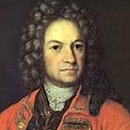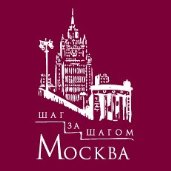The most English places in Moscow
16.03.2015 19:02 Просмотров: 162
 Despite the distance between Russia and the UK, the countries are connected by commercial and cultural ties that stretch back centuries. Evidence of this relationship can be found throughout the Russian capital. Here are places in Moscow that demonstrate the influence of the UK in Russia's history.
Despite the distance between Russia and the UK, the countries are connected by commercial and cultural ties that stretch back centuries. Evidence of this relationship can be found throughout the Russian capital. Here are places in Moscow that demonstrate the influence of the UK in Russia's history.
The Chambers of the Old English Court
In 1553, during the reign of Ivan the Terrible, a trade mission from England headed by Richard Chancellor arrived in Moscow. While Spain and Portugal actively traded with India and the New World, England was in dire need of new markets. Ivan the Terrible welcomed the delegation in the royal chambers at the Kremlin and gave the English merchants unprecedented trading privileges: they were allowed to trade freely in all Russian cities without paying any customs duties. The English merchants specialized mostly in the wholesale trade of furs, timber, leather and other goods that Europe demanded and Russia could supply. To house the Muscovy Company established in London, the tsar issued a special decree granting the company spacious chambers on Varvarka Street. In 1994, the Museum of the Old English Court was opened in the chambers. Queen of England Elizabeth II and her husband, Prince Philip, took part in the museum's opening ceremony.

St. Andrew's Anglican Church
In Voznesensky Pereulok , there stands St. Andrew's Anglican church, built in the 1880s by the English architect Neil Freeman. By that time, the British community in Moscow had become large and prosperous; it applied for and was granted permission to build its own church and rectory in the Victorian Gothic style. The church was consecrated in 1885 in honor of St Andrew, the patron saint of Scotland, because the Moscow-based Scots represented the most powerful faction of the British community. During the Soviet era, the church was closed. It first served as a dormitory, and until the late 1990s, it belonged to a recording studio that took full advantage of the building's exceptional acoustics. In the early 21st century, the church was returned to the British community.

Hotel Metropol
One of the most luxurious and expensive hotels in Moscow, this masterpiece of a building was constructed by Russian architect Lev Kekushev and Scottish architect William Walcot. Walcot also designed mansions for a few wealthy clients in Moscow. In 1908, Walcot left for London, where he was not in much demand as an architect; he built and lived in a modest house on St. James Street, doing some painting for a living. But in 1943, at the age of 69, after he had lost all his clients, he committed suicide.


See other:
 Vladimir Vysotsky remembered
Vladimir Vysotsky's legacy comprises of over 600 songs and over 100 poems. He sang his songs with the accompaniment of a “Russian” seven-string guitar.
Подробнее...
Vladimir Vysotsky remembered
Vladimir Vysotsky's legacy comprises of over 600 songs and over 100 poems. He sang his songs with the accompaniment of a “Russian” seven-string guitar.
Подробнее...  Moscow legends about count Bruce
We will tell you about one of the most remarkable Moscow residents, a contemporary of Peter the Great, Count Bruce, whose life gave rise to a great number of legends, m... Подробнее...
Moscow legends about count Bruce
We will tell you about one of the most remarkable Moscow residents, a contemporary of Peter the Great, Count Bruce, whose life gave rise to a great number of legends, m... Подробнее...  History of Moscow Monuments Moscow monuments....there are quite a lot of those in our city! Well, first of all let's get clear - there are so many monuments in Moscow that listing them all would pro... Подробнее...
History of Moscow Monuments Moscow monuments....there are quite a lot of those in our city! Well, first of all let's get clear - there are so many monuments in Moscow that listing them all would pro... Подробнее...  Eliseevsky Store in Moscow Eliseevsky store is probably one of the most famous stores in the entire Moscow. Do me a favor, if you're strolling along the beautiful Tverskaya st., don't forget to fin... Подробнее...
Eliseevsky Store in Moscow Eliseevsky store is probably one of the most famous stores in the entire Moscow. Do me a favor, if you're strolling along the beautiful Tverskaya st., don't forget to fin... Подробнее...  Bolotnaya Square
The name of the area, Boloto (literally meaning the marsh), was known since the 14th century, when it was located in the meadows on the low bank of the Moscow River and... Подробнее...
Bolotnaya Square
The name of the area, Boloto (literally meaning the marsh), was known since the 14th century, when it was located in the meadows on the low bank of the Moscow River and... Подробнее... Our Friends
Contact us
E-mail: admin@anothercity.ru








